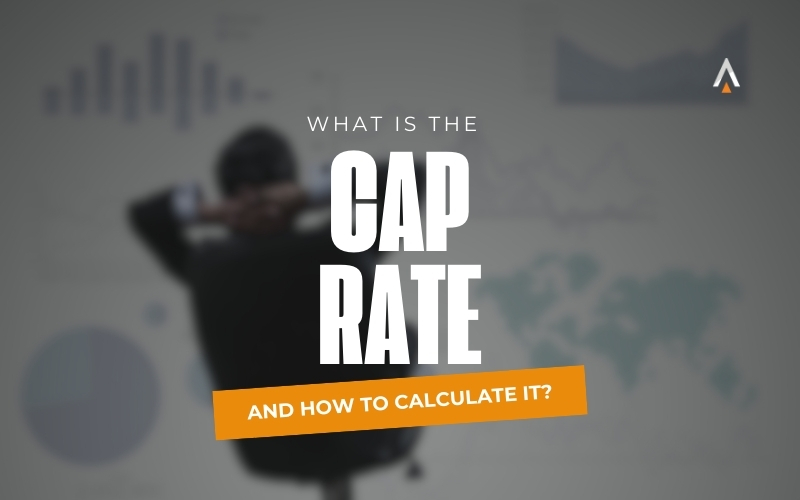What Is a Cap Rate and How Is It Calculated?

Learn what a cap rate is in real estate, how it's calculated, and why it's essential for smart property investing.
Complete Guide to Cap Rate in Real Estate: What It Is, How to Calculate It, and Strategies for Successful Investing
If you're considering investing in real estate, understanding the Cap Rate (Capitalization Rate) is essential for making smart decisions. This financial metric helps you evaluate a property's profitability without considering financing, making it a key tool for comparing different investment opportunities.
In this article, we’ll explain what the Cap Rate is, how to calculate it, what is considered a good rate, and how to use it to maximize your profits in the real estate market.
What Is the Cap Rate in Real Estate?
The Cap Rate (Capitalization Rate) is a percentage that measures the expected annual return of a property in relation to its market value. It is mainly used in income-generating property investments, such as apartment buildings, retail spaces, office buildings, and other real estate assets.
Cap Rate Formula
The basic formula to calculate it is:
Cap Rate = Net Operating Income (NOI) / Property Value × 100
Where:
-
NOI (Net Operating Income): Gross rental income minus operating expenses (maintenance, insurance, taxes, etc.).
-
Property Value: Purchase price or current market value.
How to Calculate the Cap Rate (Practical Example)
Let’s say you are evaluating an apartment building with the following features:
-
Annual rental income: $120,000
-
Annual operating expenses: $40,000
-
Property value: $1,000,000
Step 1: Calculate NOI
NOI = Income – Expenses = 120,000 – 40,000 = 80,000
Step 2: Apply the Cap Rate formula
Cap Rate = 80,000 / 1,000,000 × 100 = 8%
Interpretation: This property generates an 8% annual return on its value, excluding financing.
What Is Considered a Good Cap Rate?
There is no universal “ideal” percentage, as it depends on factors like:
-
Location (more competitive markets usually have lower Cap Rates).
-
Type of property (commercial, residential, industrial).
-
Associated risk (properties in developing areas may have higher rates).
Common Cap Rate Ranges
| Cap Rate | Interpretation |
|---|---|
| 4% - 6% | Properties in premium areas (low risk, high demand). E.g., Miami Beach, Manhattan. |
| 7% - 9% | Good balance between profitability and risk. Growing markets. |
| 10%+ | High returns but higher risk (less developed areas or distressed properties). |
Advantages and Limitations of the Cap Rate
✅ Advantages
✔ Easy to calculate – You only need NOI and property value.
✔ Useful for comparing properties – Helps you evaluate multiple investments quickly.
✔ Excludes financing – Ideal for analyzing pure profitability.
❌ Limitations
✖ Does not include financing costs (mortgage, interest).
✖ Does not reflect value appreciation – Only measures current profitability.
✖ Depends on accurate data – If NOI is misestimated, the result will be unreliable.
How to Use Cap Rate to Make Better Investment Decisions
-
Compare Properties
-
If one property has a 6% Cap Rate and another has 9%, the second might be more profitable—just be sure to evaluate the risk.
-
-
Evaluate the Local Market
-
In high-demand cities (e.g., Miami), Cap Rates are often lower (4%-6%) due to strong appreciation potential.
-
In emerging markets, rates can exceed 10%, but require more analysis.
-
-
Combine with Other Metrics
-
Cash Flow: Does the property generate positive income after expenses and mortgage?
-
ROI (Return on Investment): Takes into account appreciation + rental income.
-
Vacancy Rate: How long is the property unoccupied?
-
Frequently Asked Questions About Cap Rate
❓ Does the Cap Rate include the mortgage?
No, it only considers NOI and property value, excluding financing.
❓ Is a high or low Cap Rate better?
It depends on your strategy:
-
High Cap Rate (8%+): Higher returns, but potentially higher risk.
-
Low Cap Rate (4%-6%): Lower return, but more stability (e.g., premium area properties).
❓ Can I use Cap Rate for residential properties?
Yes, but it's more common in commercial investments (offices, retail, multifamily).
❓ Does the Cap Rate change over time?
Yes, because both NOI and market value can fluctuate.
Conclusion: Is It Worth Investing Based on Cap Rate?
The Cap Rate is a powerful tool to evaluate a property’s profitability, but it should not be the only factor in your decision. Combine it with:
-
Cash flow analysis
-
Local market trends
-
Appreciation potential
If you're looking to invest in Miami or sell a property, a specialized agent can help you calculate the exact Cap Rate and find the best opportunities.
📌 Ready to take the next step? Contact us for a personalized analysis and maximize your real estate investment.
